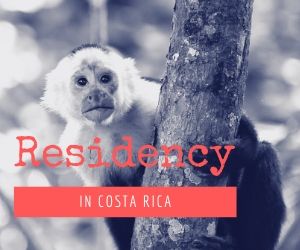Wikipedia it out Gentlemen. http://en.wikipedia.org/wiki/Gps
Long Story Short: You're screwed until the Costa Rican government (or a private company) gets the data collected and put into a digital map format for major GPS units.
Long Story Long:
(1)
Costa Rican GPS Coverage: GPS is available everywhere on earth. You are guaranteed to find 3 out of 4 necessary (4 tells you altitude too) anywhere on earth provided you aren't in a building or in a tall canyon, etc. There are 24 sats covering the globe.
(2)
COSTA RICA INTERFERENCE: Unless they're jamming (maybe? to protect real estate speculators? hmmm, interesting thoguht as I type this...nahhh...anyway) -- it's most likely atmospheric problems -- which are well known and documented and can be accounted and corrected for. You see, modern GPS receivers can calculate the delays and/or positioning hotspots that most often plague GPS reception and correct for them. Note in the link below that the GPS 'problems' might have been with the interference, not so much that coverage wasn't adequate. Newer units compensate,
so buy new.
(3)
Whether your GPS receiver will correlate your Global Position to a MAP -- is another question. Remember, this was devised for the US Military in the late 70's and then they didn't have fancy computer generated color maps of anything. The system simply provided them a coordinate (LAT/LONG). They had to then use a PAPER (gasp!) map and find out where in the hell they were.
(4)
You're probably screwed. Because, after all, what you SEEK is not the location info (GPS will provide this in a numerical format - see #3 above), but the mapping component that makes a GPS receiver for non-military and experienced navigators (read: Civilians) useful. E.G. when it receives your LAT/LONG it plots your point on a digital map of the location (with roads, etc). Note that TOPO maps don't always have roads. Thus, it's a highly specialized thing in countries where infrastructure development on civilian 'goodies' such as this aren't really prioritized. Further, Costa Rica is a small country. Finally, things in Costa Rica aren't really mapped well even on paper to begin with. Terminating your thoughts of the well-connected GPS driving lifestyle is this fact: roads that have one name have another to locals and vice-versa as well as the obvious factor that streets and addresses aren't always given names other than "When you Encounter the Ramp of the Hospital Guardia Calderon, Please go 200 meters...", etc. Good luck.
Which is what, I suspect, the Costa Rican government will happily sell you for your unit for a lot of money.
Or, go here:
http://rwsmaps.griffel.se/
http://www.travelbygps.com/maps/central_america.php
http://web.utk.edu/~orvis/
http://web.utk.edu/~orvis/CR_GPS.pdf
Note the last is an excellent page that includes the reasoning behind why cheap (older, per this article, many years ago) GPS units probably suck and newest (better, then -- more expensive) ones worked. And why maps are notoriously difficult to line up with Geospatial references.










